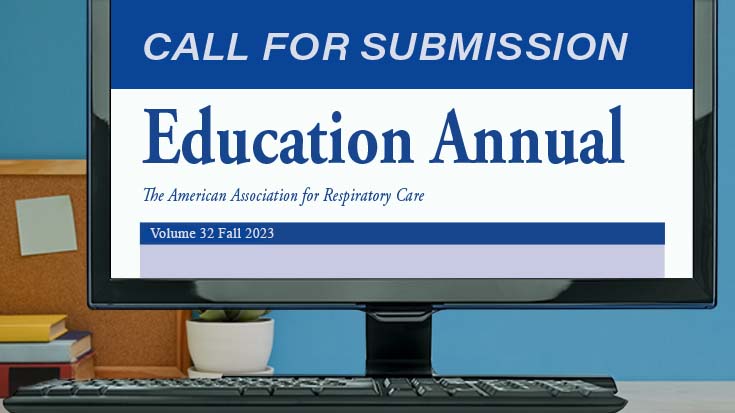
AARC members Dean Hess, PhD, RRT, FAARC, and Richard Branson, MS, RRT, FAARC, are among the authors of a new set of clinical practice guidelines (CPGs) on the acute respiratory distress syndrome (ARDS).
Published in this month’s American Journal of Respiratory and Critical Care Medicine, the evidence-based CPGs focus on the use of mechanical ventilation in adult patients with ARDS and offer recommendations on selected ventilatory interventions.
According to Dr. Hess, the systematic review and meta-analysis of relevant research conducted by the authors strongly suggests the use of lower tidal volumes and lower inspiratory pressures.
“Specifically, we recommend the use of tidal volumes in the range of 4-6 mL/kg predicted body weight (PBW) and keeping plateau pressure less than 30 cm H2O,” he says.
Dr. Hess goes on to note that the initial tidal volume should be set at 6 mL/kg, and if necessary, be decreased to maintain plateau pressure less than 30 cm H2O. He also says tidal volume might be increased to 8 mL/kg PBW in the presence of asynchrony, such as double-triggering.
He believes there are several important implications for RTs in the recommendations.
“First, respiratory therapists should calculate PBW and set the tidal volume based on PBW,” he says. “Second, plateau pressure should be measured and recorded on a regular basis. Third, tidal volume limitation should be observed whether the ventilator is set for volume control or pressure control, regardless of the ventilator mode, and whether or not spontaneous breathing is present.”
The new guidelines also recommend prone positioning for patients with severe ARDS.
“Prone position is unique in the ARDS treatment armamentarium in that not only does prone position improve gas exchange, it provides a mortality benefit,” says Branson. “Specifically, prone position is recommended for severe ARDS and must be performed at least 12 hours a day.”
However, routine use of high-frequency oscillatory ventilation is not recommended for patients with moderate or severe ARDS and its recommendation is conditional for higher PEEP and recruitment maneuvers.
No conclusions could be drawn regarding the use of extracorporeal membrane oxygenation in patients with severe ARDS.
Branson emphasizes the guidelines were created after a painstaking review of the literature accomplished using the GRADE system, which is a systematic process for evaluating the evidence, and believes they can help inform the care respiratory therapists deliver to ARDS patients at the bedside.
“As a profession we need to embrace evidenced based medicine,” he says. “The days of suggesting and implementing treatments with no evidence need to be behind us.”
He urges his colleagues to read the guidelines and put them to use in their ICUs.
“As RTs we should be familiar with these guidelines and implement treatments that have shown to improve outcomes,” says Branson. “Similarly, we need to abandon those therapies that have not proven to improve outcomes, regardless of our previous bias and preconceived notions.”
Email newsroom@aarc.org with questions or comments, we’d love to hear from you.














